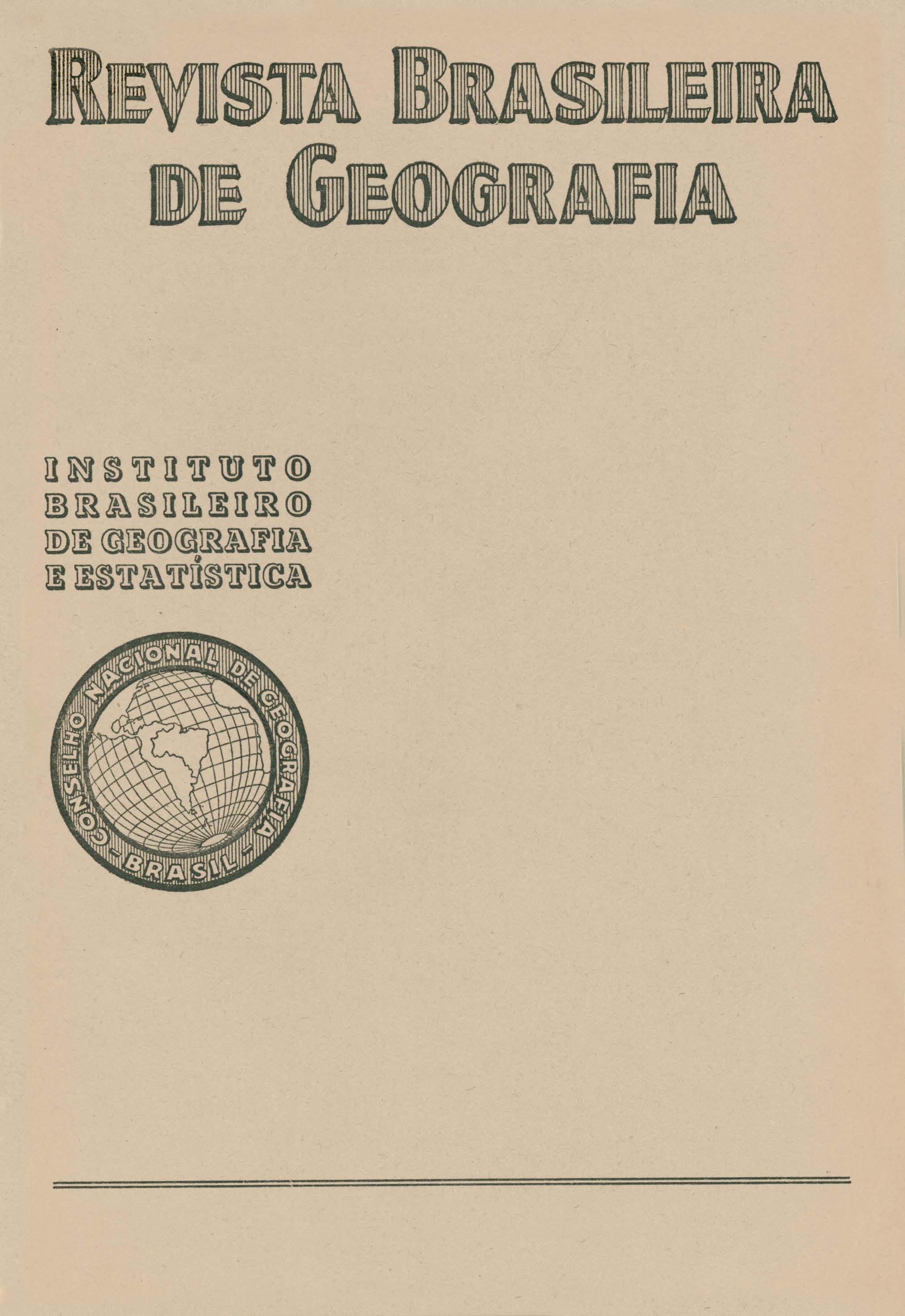Subsídios para o estudo de um ciclo climatológico do Sueste Brasileiro
Temperaturas máximas do Rio de Janeiro no período de 1879-1938
Keywords:
Rio de Janeiro - Estado, Brasil, Sudeste, Climatologia, MeteorologiaAbstract
The author, tecnic Counselor of the "Conselho Nacional de Geografia", Department XXII "Climatology", ex-director of the Meteorologic Institute, offers an aid to the study of a climatological cicle of the brasilian southeast.
Adding up each year, in the period· 1879-1938, for Rio de Janeiro, all days with maximum temperature of the air, equal to or above 27"5 Centigrade, and only when successive in series equal to or longer than three days, the curve of such annual totals, conveniently smoothed, seems to run with a regular oscillation of 21 to 23 years, presumably the double solar period of Hale. The author claims that in the hot series, predominate the South Atlantic and Continental air masses, through types of weather which he describes summarily, and on the other hand, in the cooler series prevail the anticyclonic air masses, which are freer to advance northward owing to much smaller activity of the continental depression. Statistics of types of weather, as shown by daily charts, confirms this presumption C. E. P. Brooks' observations of the slow northward movement of the South Atlantic center of action, were continued by the author, and the resultant curve, resign to 1921 and falling to the present, is probably related to the cooler and hot series 1901-21 and 1922-38, respectively, of Rio's temperature. It is shown how the first two series, 1880-1900 and 1901-21, fit in well with Wagner's appreciation (completed by others), of weaker and intenser general circulation, respectively, in those periods. And yet, there is apparent contradiction between opposite conditions, locally, in the series 1922-38 as contrasted with the previous one, and Scherhag's contention that general circulation has continue active, and even more so, from 1922 onward, as compared with circulation of the previous series 1901-21. In most of Brazil and for the South Atlantic, 1921 appears to have been a decided climatic "turning-point", abstraction made of the oceanic lag-effects which hung on for a couple of years more after that important date.
The author, in other un published investigation, derived a 21 year cycle, of different phase, in Rio's rainfall. In the present work, is pointed out the curious coincidence of alternate solar mínima with the commencements of the hot and cooler periods, recalling the author that Hanzlik, with the pressure element, has attempted to demonstrate the manifestation of the double solar cycle over the greater part of the world. The author calls the attention of hygienists to the similarity of his curve with the mortality curve for Rio de Janeiro, when inverted, suggesting that cooler periods may be more dangerous to the health of tropical inhabitants, than heat excesses. Concluding, the author. hopes the notes given may interest investigators of world weather, in itself, and In its ·very important cosmical relations. If this suggestion is true, rigorously, the Hale period (21 to 23 years), sets up a 42 to 46 year complete periodicity in. Rio's maximum temperature curve, a well icnown cycle, found elsewhere in atmospheric phenomena, such as severe droughts and very wet periods, cycles which the author has also noted in brazilian weather. The only other explanation of the cooler years from 1901 to 1921 (more strictly starting in 1906), would be to consider it as an accidental event, produced by vulcanism, · as proposed by Humphreys, in fact, there were violent eruptions in 1902, 03, 04 and 1912.






